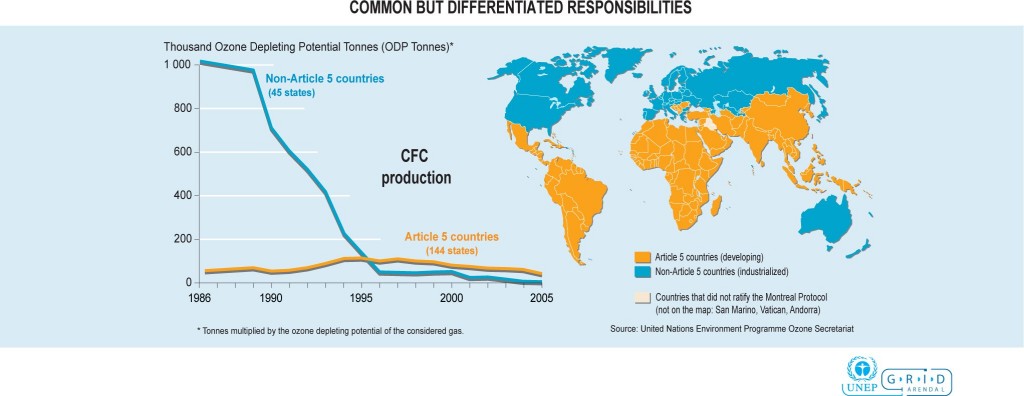Maybe I’ve got it backwards (har har). I’ll be the first to admit that Climate Change is not my forte. As this class progresses and I am dealt the deed of being an ambassador for Dickinson College, I hope to wrap my mind around this larger phenomenon that will be taking place in Copenhagen. In Whalley’s Bringing the Copenhagen Global Climate Change Negotiations to Conclusion he speaks about “Common but Differentiated Responsibilities” as being the PARAMOUNT issue at hand. Since China, India, and Brazil are growing at such a rapid pace and desire to be affluent nations–they are going have to take on more responsibilities. However, smaller nations would not fall under the same umbrella. Understandable–why should a small country off the coast of Africa have to be under the same restrictions as say a country like China. However, does that make them free to go?
Below is a chart that is presented in the readings read last week in class in regards to which countries fall into specific categories.

(I apologize for the image size–it wants to fall off of the page otherwise. Here’s a link to view it fully–you may have to download it.)
Whalley presents two of the arguments:
– These countries should not be put under the same restrictions as the other countries as their primary concern should be the economic development and stability of the smaller nations.
– The other interpretation is to the form in which the commitment is undertaken–in which some countries would have one responsibility while others take on something else–so some would take on emissions intensity while others would take on emission levels.
To be honest, I haven’t made a complete decisions has to which interpretation I’m for–I suppose as I add to repertoire terminology and factoids I’ll be more inclined to plant my feet firmly in one. But I want to take the time to theorize the concept of Common but Differentiated Responsibilities on a college campus–particularly Dickinson’s. Perhaps with my minimal knowledge this is completely in left field. But here we go:
Dickinson College as a unit has certain responsibilities in order to be considered one of the Top 5 sustainable campuses in the country. The college as a body can limit certain things or change appliances to bring down our footprint.
Let’s say that our individual classes were smaller but still semi-prosperous countries. Classes have the responsibility to perhaps find alternative methods to printing out paper (such as Moodle, Blackboard) or perhaps even having a class go paperless ala the Amazon Kindle.
Now let’s go one step further and say that each individual student were even smaller, less prosperous countries. While we certainly would not be held to the same standards as Dickinson, or individual classes, we are still expected to do something rather than leaving it up to the college and individual classes/professors to do the work for us. Perhaps by doing simple things that Public Service Announcements would dictate such as turning off the lights when not in the room, not running the water when brushing your teeth, not driving from your dorm to the gym because of sheer laziness–things like that. Despite how simple they may be, they are responsibilities on a level which one could easily manage.
So we as a community have a goal of sustainability–but we contribute to it in different ways. Again, I want to stress this is not my finalized view of the argument, but, a way to perhaps to look it on a smaller scale.
Alright–after all of that–hopefully that makes some sense. I want to quickly jump to one more thing…
As a class tonight, we are watching The Age of Stupid. Check out the trailer and the link–I will be posting a supplementary blog entry to talk about my experiences with the film from both a climate change and Mass Media Studies perspective.
Tags: Amazon Kindle, common but differentiated responsibilities, COP15 Resources, Emission Intensity, Emission Level, The Age of Stupid